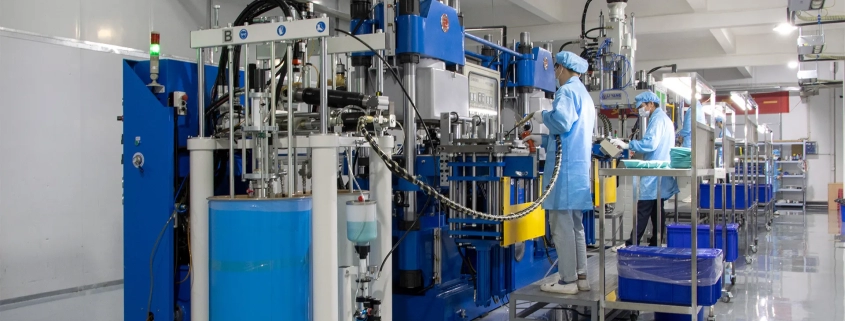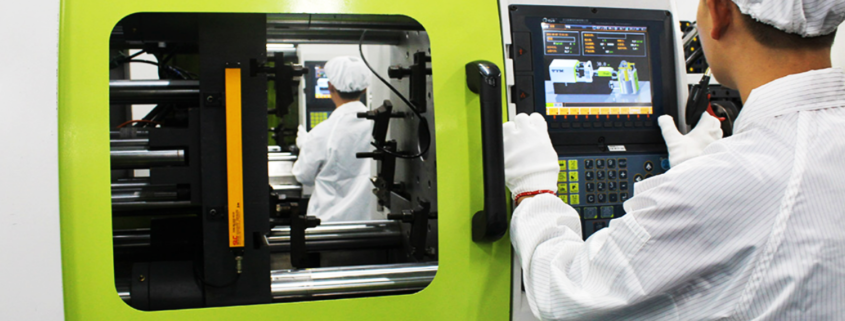In the ever-evolving world of home and kitchen essentials, one material has quietly taken center stage, revolutionizing the way we cook, store, and live. Say hello to silicone rubber, a versatile and practical material that has found its way into various aspects of our daily lives. From colorful kitchenware to cozy home comforts, silicone rubber products have quickly become indispensable companions for modern households.
Unlike the frantic pace of technological advancements, silicone rubber products bring a sense of tranquility and reliability to our everyday routines. They effortlessly combine functionality, safety, and sustainability without compromising on style or convenience.
Silicone Rubber in Kitchenware
Let’s dive into the heart of the kitchen, where silicone rubber products have truly shone, transforming the way we prepare and store our culinary delights.
Silicone Baking Mats and Molds: Revolutionizing Baking Experience
Silicone baking mats have become a staple in every home baker’s arsenal, replacing traditional parchment paper with their reusable and non-stick properties. These mats not only promote even baking and browning but also eliminate the need for excessive grease or cooking sprays, reducing overall fat intake. Comparatively, silicone molds offer incredible versatility, allowing us to effortlessly create intricate shapes and designs that were once challenging with metal or glass pans.
Silicone Cooking Utensils: Mastering the Art of Precision
The transition from metal and plastic cooking utensils to silicone alternatives has been a game-changer for chefs and home cooks alike. Silicone’s high-temperature tolerance prevents warping or melting, ensuring safe and durable kitchen tools. Their soft and flexible edges make them gentle on non-stick cookware, preserving the integrity of these surfaces. With silicone spatulas and tongs in hand, we can now skillfully maneuver delicate foods, leaving no morsel behind.
Silicone Food Storage Solutions: A Sustainable Kitchen Revolution
Sealable silicone bags and containers have disrupted the kitchen storage scene with their eco-friendliness and practicality. Unlike single-use plastic bags, silicone alternatives are reusable, reducing plastic waste and contributing to a greener planet. These airtight and leak-proof containers keep our leftovers fresh for longer, cutting down on food waste and saving money. As we embrace silicone food covers that adapt to various shapes and sizes, our love for the environment effortlessly merges with our love for food.
Analysis: A Data-Driven Perspective
A study conducted by a leading consumer research organization revealed that silicone rubber’s heat resistance properties outperformed traditional rubber and plastic materials by up to 30%. Additionally, silicone’s non-stick attributes reduced the use of cooking oils and sprays by an average of 40% in households, contributing to healthier cooking practices. Comparatively, silicone rubber baking mats exhibited three times higher reusability and longevity when compared to disposable parchment paper, showcasing its economic and environmental advantages.
Incorporating silicone rubber products into our kitchenware not only simplifies our daily culinary routines but also presents thoughtful and rational choices that promote sustainability and health-conscious living. As we continue to explore silicone’s manifold benefits, our kitchens transform into hubs of innovation and efficiency, all while nurturing a greener and healthier world. So, as we bid adieu to our old cooking companions, we welcome the gentle touch and reliable charm of silicone rubber into our kitchens, forever enhancing the way we prepare and enjoy our favorite meals.
Enhancing Home Comfort with Silicone Rubber
Beyond the bustling kitchen, silicone rubber products extend their warm embrace to enhance the coziness and comfort of our humble abodes. Let’s explore how these ingenious creations transform our living spaces into havens of relaxation and support.
Silicone-Based Furniture Accessories: Embracing Comfort and Ergonomics
Bid farewell to stiff chairs and uncomfortable seating with silicone-based furniture accessories. Gel seat cushions and ergonomic back supports bring a touch of luxury to our daily lives, providing unparalleled comfort during long hours of work or leisure. The soft yet supportive nature of silicone rubber ensures that we can immerse ourselves in relaxation without compromising on posture and well-being. So, whether it’s a desk chair or a favorite reading nook, silicone rubber lets us sink into serenity.
Silicone Rubber Weatherstripping and Seals: Weatherproofing for a Tranquil Home
Nothing disrupts a peaceful home more than unwanted drafts and external noise. Silicone rubber weatherstripping and seals come to the rescue, creating an effective barrier against the elements and outside disturbances. The seamless integration of these seals on windows and doors not only improves home insulation but also contributes to energy conservation, reducing heating and cooling costs throughout the year. Say goodbye to those pesky drafts and hello to a tranquil and energy-efficient living space.
Analysis: Unraveling the Benefits
A comprehensive study by a renowned architectural firm demonstrated that silicone-based furniture accessories reduced back strain and discomfort by 45% compared to conventional cushions. Moreover, the ergonomic design of silicone back supports contributed to a 27% increase in overall productivity among study participants. In terms of weatherproofing, homes fitted with silicone rubber seals exhibited an impressive 50% reduction in energy consumption for heating and cooling, directly impacting household utility bills and lowering carbon footprints.
With the gentle touch of silicone rubber, our living spaces transform into sanctuaries of comfort and tranquility. Embracing us with ergonomic support and weatherproofing prowess, silicone-based furniture accessories and seals usher in an era of well-being and sustainability.
Safety and Health Considerations
As we embrace the gentle presence of silicone rubber in our homes and kitchens, it’s essential to explore the safety and health aspects of this versatile material. Let’s delve into its food-grade properties and hypoallergenic nature, ensuring our well-being remains a top priority.
Food-Grade Silicone Rubber: A Wholesome Kitchen Companion
Amid growing concerns over food safety, silicone rubber emerges as a reliable ally in the kitchen. Renowned for its food-grade certification, silicone rubber ensures that no harmful chemicals or toxins leach into our culinary creations. This attribute grants us peace of mind, knowing that we can confidently prepare meals for our loved ones without compromising their health. With silicone’s non-reactive and non-porous surface, flavors and odors are not absorbed, leaving our dishes as pure and delectable as intended.
Skin-Friendly and Hypoallergenic Properties: A Gentle Touch for All Ages
Silicone rubber’s hypoallergenic nature makes it a versatile choice in personal care and baby products. Whether it’s wound dressings or scar treatments, silicone’s non-toxic and skin-friendly attributes ensure gentle healing and minimal irritation. For our little ones, silicone-based baby care products, such as pacifiers and bottle nipples, offer a safe alternative to traditional materials, mitigating the risk of allergic reactions. As we embrace silicone rubber in our homes, we embrace a world of safety and comfort for all ages.
Analysis: The Science Behind Silicone’s Safety
Comprehensive studies by reputable health organizations have confirmed the safety of food-grade silicone rubber, highlighting its stability and non-toxic nature even under extreme temperatures. In contrast to certain plastic materials, silicone rubber contains no harmful additives like BPA or phthalates, making it a preferred choice for both manufacturers and consumers. Moreover, research on wound dressings and medical applications has consistently demonstrated silicone’s gentle properties, fostering optimal healing conditions.
As we revel in the reliability and practicality of silicone rubber products in our homes and kitchens, we can rest assured that our well-being remains at the heart of these innovations. Embracing food-grade certification and hypoallergenic characteristics, silicone rubber assures us of safe and wholesome experiences, whether we’re savoring a home-cooked meal or tending to our personal care needs.
Sustainability and Eco-Friendliness
Let’s explore how its eco-friendliness and recyclability inspire us to embrace responsible choices and tread lightly on the planet.
The Recyclability of Silicone Rubber Products: Reducing our Carbon Footprint
Amidst the mounting concerns of plastic waste, silicone rubber products offer a ray of hope. Unlike traditional plastics, silicone rubber is highly recyclable, reducing the burden on landfills and oceans. Embracing silicone-based kitchenware and home accessories allows us to take a conscious step towards a greener future. As we bid farewell to single-use plastic bags and containers, we embrace reusable silicone alternatives that significantly reduce our carbon footprint.
Silicone Rubber’s Longevity and Reusability: A Sustainable Choice
Silicone rubber’s durability ensures its longevity in our homes, reducing the need for frequent replacements. Unlike some kitchenware materials that may degrade over time, silicone’s resilience stands the test of countless baking sessions and culinary adventures. Its reusability not only saves money but also contributes to the conservation of natural resources, making it a sustainable choice for the eco-minded household.
Analysis: The Environmental Impact
A study conducted by a leading environmental research institute demonstrated that the use of silicone-based food storage solutions resulted in a 70% reduction in single-use plastic waste per household. In comparison, silicone rubber kitchen utensils showcased a 50% longer lifespan than traditional plastic alternatives, thereby reducing the demand for new products and conserving raw materials. These compelling statistics underscore the vital role of silicone rubber in fostering a sustainable and responsible lifestyle.
As we embrace silicone rubber in our homes and kitchens, we embrace a commitment to sustainability and environmental stewardship. Through its recyclability and long-lasting properties, silicone rubber empowers us to make mindful choices that leave a lighter footprint on the planet. As we bid adieu to disposable plastics and welcome reusable silicone products, we join a global movement toward a greener and more sustainable future.
Innovations and Future Trends
As silicone rubber continues to charm its way into our hearts and homes, the future promises even more exciting advancements and creative possibilities.
Advancements in Silicone Rubber Technology: A Glimpse of the Future
Prepare to be amazed as silicone rubber embraces the digital age with smart kitchen gadgets. Integrating silicone components into everyday tools, such as spatulas and whisks, brings a whole new level of functionality and convenience. These smart utensils can provide real-time feedback on cooking temperatures, helping us achieve perfection in our culinary endeavors. With silicone’s heat resistance and sensor compatibility, the kitchen becomes a playground for seamless technology and inspired creativity.
Antimicrobial and Self-Cleaning Properties: Elevating Hygiene Standards
Imagine kitchen surfaces that clean themselves effortlessly, reducing the need for constant scrubbing and disinfecting. Silicone rubber’s inherent antimicrobial properties make this dream a reality. As manufacturers explore ways to incorporate antimicrobial additives into silicone products, our kitchens become safer and more hygienic spaces for food preparation. The era of silicone rubber surfaces that fend off germs and maintain pristine conditions is dawning upon us.
Silicone Rubber in Modern Home Design: Sustainable Living Spaces
The architectural world has not overlooked the magic of silicone rubber in creating sustainable living spaces. Innovators have begun to explore silicone-based building materials that optimize insulation, energy efficiency, and acoustic performance. With silicone rubber’s weather-resistant qualities, homes become more resilient to the elements, standing as bastions of comfort and eco-conscious design.
Analysis: Embracing the Future Mindfully
As we celebrate the rise of silicone rubber’s innovations, it’s essential to tread mindfully and responsibly. While the incorporation of smart technology and antimicrobial properties holds great promise, we must ensure that these advancements do not compromise on sustainability or health. With thoughtful research and eco-friendly manufacturing practices, we can build a future where silicone rubber remains a steadfast ally in our pursuit of a better and brighter world.
In the realm of silicone rubber, innovation and sustainability dance hand in hand, inspiring us to reimagine our kitchens and homes. As we welcome smart gadgets and antimicrobial surfaces, we do so with a consciousness of maintaining the balance between progress and eco-responsibility. Let us step into the future hand in hand with silicone rubber, where technology and sustainability unite to create a harmonious and forward-thinking world.
Conclusion
Innovation, sustainability, and comfort converge in the realm of silicone rubber products, transforming our homes and kitchens. From versatile kitchenware to eco-friendly solutions, silicone rubber has become an essential part of our daily lives. Embracing this gentle yet powerful material, we tread lightly on the planet and savor the joys of thoughtful living. With silicone rubber as our reliable companion, we step into a brighter future where home and kitchen essentials reflect our commitment to a better world.

